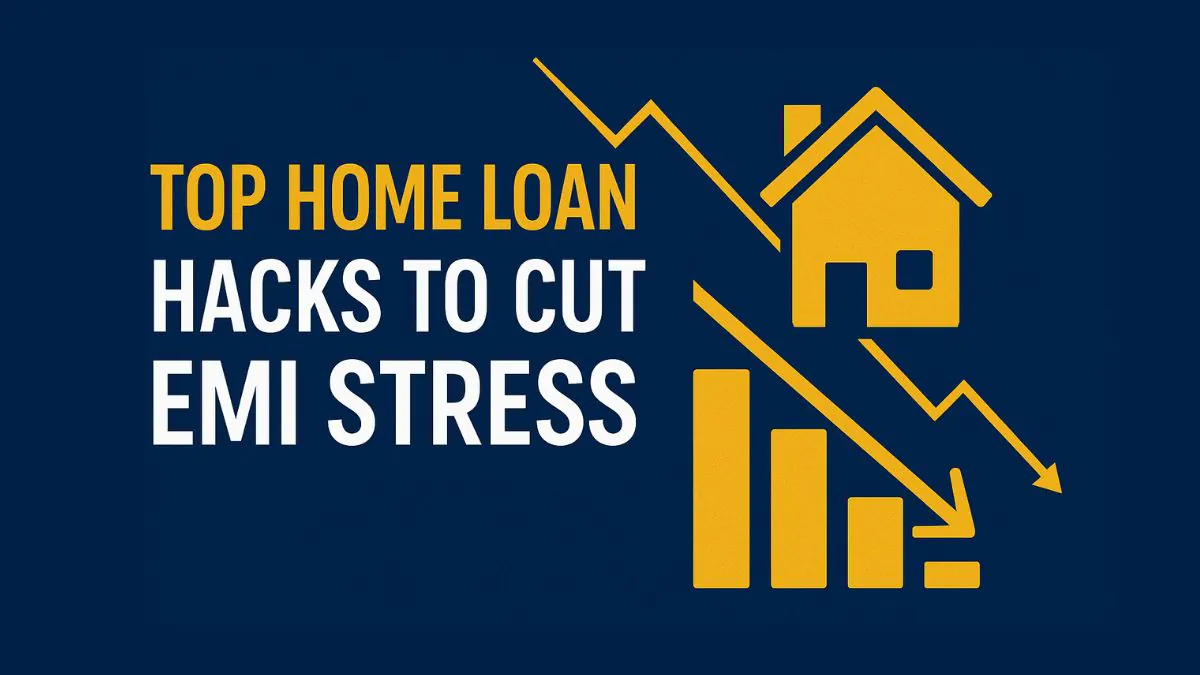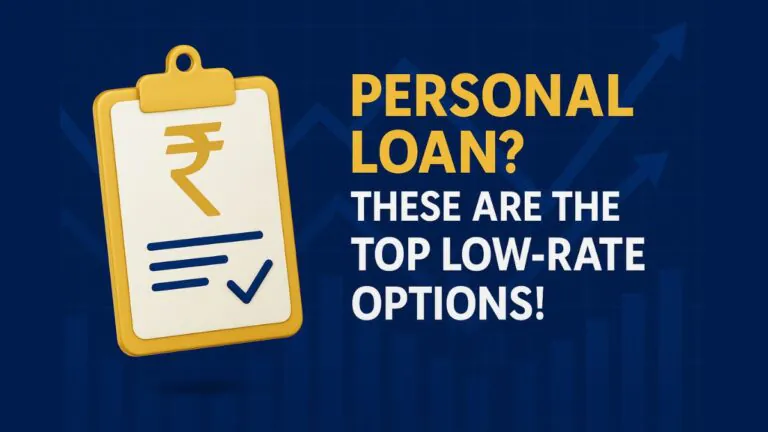Top Home Loan Hacks in India

Table of Contents
ToggleShare this article ↷
Save Time, Cut Costs & Reduce EMI Stress
Owning a home is a big dream for many in India, but the home loan process can feel overwhelming. From piles of paperwork to high EMIs, borrowers often face stress and delays. With smart home loan hacks, you can save time, cut costs, and ease your financial load.
This article offers practical personal finance tips to reduce home loan EMI in India, including quick tricks, cost-saving ideas, and a detailed document checklist.
Read more: Credit Card Debt Is Rising – Why It’s a Growing Threat
Quick Tips to Save Time During Home Loan Process
Time is precious, and a smooth loan process saves both effort and worry. Try these steps:
- Ask for the complete document checklist upfront: Banks like SBI or ICICI share a list of required papers. Get it early to avoid last-minute chaos.
- Submit all documents together, neatly scanned and labelled: Organize files (e.g., “Aadhaar_Front.pdf”) to speed up verification.
- Double-check name/address consistency across all paperwork: Ensure your PAN, Aadhaar, and bank details match to avoid rejections.
Pro tip: Visit RBI’s Sachet to verify lender reliability before starting.
How to Reduce Home Loan Interest Burden
High interest can make EMIs a headache. These personal finance tips can help:
- Use SBI MaxGain or overdraft-linked loans: Park idle savings to cut effective interest. It’s like a smart trick to save paisa by paisa.
- Make one extra EMI yearly or opt for step-up plans: Use bonuses to prepay or increase EMIs as your income grows.
- Opt for a shorter tenure if possible: A 10–15 year loan reduces interest compared to 20–30 years.
- Balance transfers: Switch to a bank with lower rates, but check transfer fees first.

Cost-Saving Home Loan Hacks for Borrowers
Every rupee saved counts. Here’s how:
- Compare interest rates: Check rates from ICICI, HDFC, and PSU banks like SBI. Use BankBazaar for easy comparisons.
- Negotiate if you have a better credit score: A CIBIL score above 750 gives you leverage to ask for lower rates.
- Ask for waivers on processing and admin fees: Request banks to reduce or waive charges that can range from ₹10,000–₹30,000.
Private vs PSU Banks: How to Choose?
Your lender choice matters. Here’s a breakdown:
- Private Banks (e.g., ICICI, HDFC): Process applications quicker (10–15 days) but charge higher interest rates (8.5–10%). Perfect for those in a rush.
- PSU Banks (SBI, BoB): Take 30–60 days, especially for non-reputed properties, but offer lower rates (8–9%). Faster if your property is pre-approved.
Tip: Check pre-approved projects on NHB’s portal for quicker PSU bank processing.
Home Loan Document Checklist
Ready documents save time. Here’s what you need:
Personal:
- Aadhaar
- PAN
- Current address proof
Income Proof:
- 3–6 months’ payslips
- Last 2 years’ ITR
- 6 months’ bank statement
- Joining letter + Company ID card
Property Documents:
- For Builder: Agreement to build, project documents, demand letter, cost break-up sheet
- For Resale: Chain of agreement, occupancy certificate, encumbrance certificate, khata document, latest tax paid receipt
Keep both digital and hard copies.
Pitfalls to Watch Out For
Stay cautious of these traps:
- EMIs stay fixed, but tenure gets extended silently: Review statements to catch this.
- Interest rate may rise if your credit score drops: Pay on time to avoid hikes.
- No prepayment penalty on floating loans, but read the fine print: Hidden clauses may apply.
- Review your interest rate every 3–6 months: Banks won’t always inform you of changes.
Example: Home Loan Cost Break-up
Component | Amount (₹) |
Loan Charges | 50,00,000 |
Processing Fees* | 17,500 |
Legal and Valuation | 12,000 |
Documentation-Stamp Paper | 5,000 |
Total Cost | 34,500 |
*Note: 0.35% or up to ₹30,000 + GST, whichever is lower. Charges vary by bank and time.
Let’s tackle those home loan worries with some chill personal finance tips:
- How to manage home loans smartly through personal finance planning:
Plan your budget like a pro – set aside extra cash monthly, use SBI MaxGain to park savings, and check rates every 6 months. Keeps things smooth!
- EMI reduction hacks every Indian homebuyer should know:
Pay one extra EMI yearly with your bonus, switch to a shorter tenure if you can, or transfer to a lower-rate bank. Easy peasy!
- Top financial habits to repay home loan faster in India:
Save a little extra each month, avoid late payments to boost your CIBIL score, and prepay when possible. You’ll be debt-free soon!
- Personal finance strategies to save on housing loan interest:
Use overdraft loans to cut interest, negotiate rates with a good credit score, and compare banks like SBI or HDFC. Saves you big time!
Try these, and you’ll feel like a finance rockstar! Got questions? Hit me up!
Conclusion
These home loan hacks can save you time, reduce costs, and lower EMI stress. Prepare documents early, compare lenders, and negotiate smartly. Prepay when possible and keep your credit score strong. For more tips, explore RBI’s consumer education portal.
Share your home loan tips below or stay updated for more financial wisdom!
Disclaimer
Well Returns is not a financial adviser. The content provided here is for informational purposes only and is intended to offer a brief overview and general knowledge. It is not a substitute for professional financial advice. Please consult a qualified financial adviser before making any financial decisions or investments.
Related FAQs
Reduce your EMI by opting for a shorter tenure, making an extra EMI payment yearly, or transferring to a bank with lower rates. SBI MaxGain can also lower interest.
You need personal documents (Aadhaar, PAN, address proof), income proof (payslips, ITR, bank statements), and property papers (agreement, occupancy certificate, etc.).
PSU banks offer lower rates (8–9%) but slower processing (30–60 days). Private banks are faster (10–15 days) but charge higher rates (8.5–10%). Choose based on your needs.






